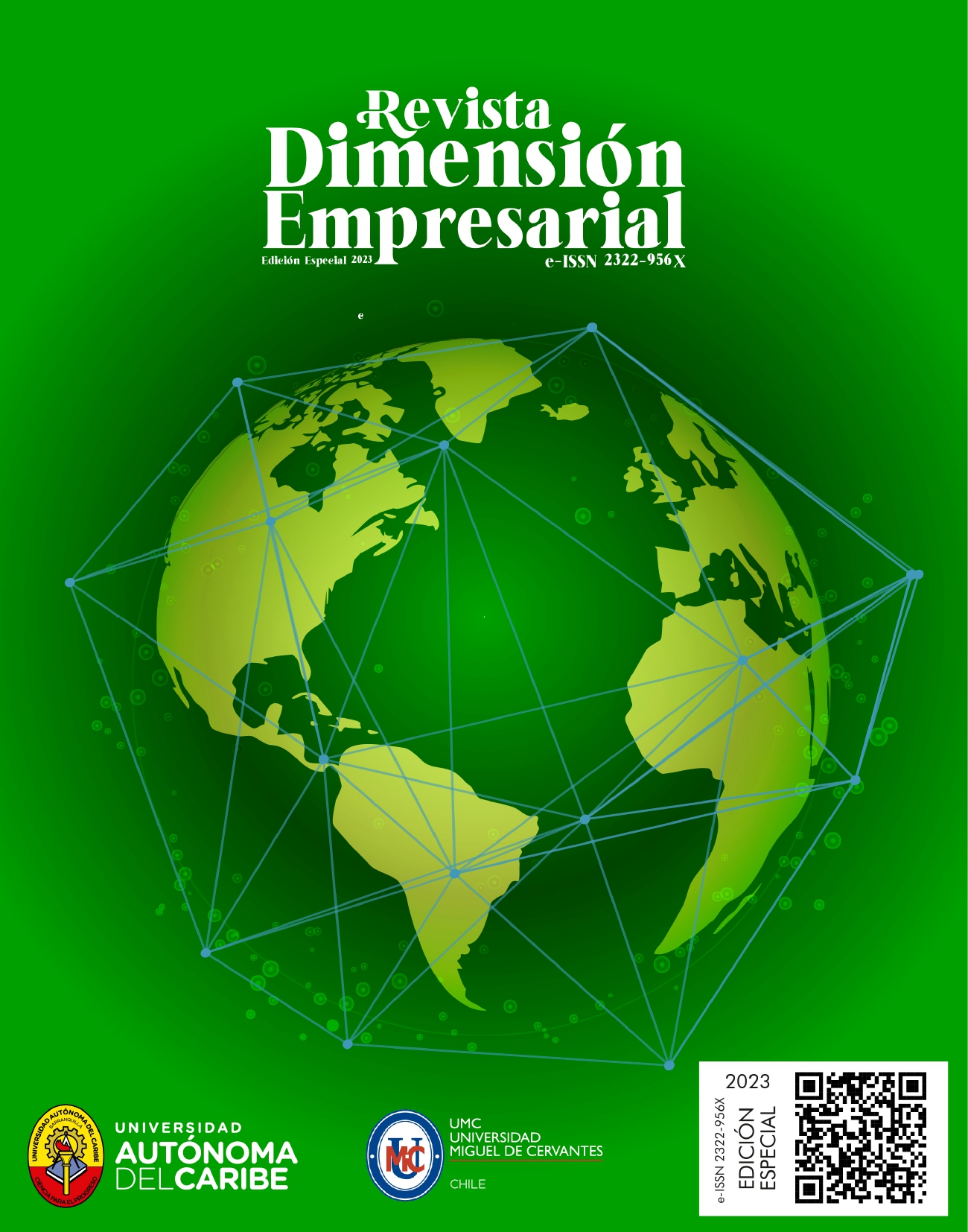La gestión estratégica de las alianzas empresariales
DOI:
https://doi.org/10.15665/dem.v21i5.3464Palabras clave:
Alianzas Estratégicas, Alianzas entre Firmas, EmpresasResumen
La presente investigación teórica desarrolla una reflexión sobre la gestión estratégica de las alianzas entre firmas, desde una perspectiva evolutiva, con el propósito de describir los mecanismos en que operan las prácticas colaborativas entre organizaciones empresariales diferentes. El resultado es una propuesta conceptual, en que se comprende a la alianza como una organización compuesta, constituida por un principal híbrido que opera junto a múltiples agentes, en función de mecanismos de orientación del comportamiento colaborativo mediante dos procesos que impactarían en la psicología de las personas: incentivos y códigos normativos.
Citas
Barnett, W. P., y Burgelman, R. A. (1996). Evolutionary Perspectives on Strategy. Strategic Management Journal, 17, 5–19. http://www.jstor.org/stable/2486901
Barney, J. (1991). Special Theory Forum The Resource-Based Model of the Firm: Origins, Implications, and Prospects. Journal of Management, 17(1), 97–98. https://doi.org/10.1177/014920639101700107
Buss, D. M. (2009). The great struggles of life: Darwin and the emergence of evolutionary psychology. American Psychologist, 64(2), 140–148. https://doi.org/10.1037/a0013207
Darwin, C. (1871). The descent of man, and Selection in relation to sex, Vol. 1. John Murray. https://doi.org/10.1037/12293-000
Darwin, Charles, 1809-1882. (1859). On the origin of species by means of natural selection, or preservation of favoured races in the struggle for life. London :John Murray.
Eisenhardt, K. M. (1989). Agency theory: An assessment and review. Academy of management review, 14(1), 57-74.
Evans J. S. (2008). Dual-processing accounts of reasoning, judgment, and social cognition. Annual review of psychology, 59, 255–278. DOI: https://doi.org/10.1146/annurev.psych.59.103006.093629
Evans, J. S. B. T., y Stanovich, K. E. (2013). Dual-process theories of higher cognition: Advancing the debate. Perspectives on Psychological Science, 8, 223–241. DOI: http://dx.doi.org/10.1177/1745691612460685
Grant, Robert M. and Baden‐Fuller, Charles, (2004), A Knowledge Accessing Theory of Strategic Alliances, Journal of Management Studies, 41, issue 1, p. 61-84, https://EconPapers.repec.org/RePEc:bla:jomstd:v:41:y:2004:i:1:p:61-84.
Grossman, S. J., y Hart, O. D. (1983). An Analysis of the Principal-Agent Problem. Econometrica, 51(1), 7–45. https://doi.org/10.2307/1912246
Hannan, M.T. and Freeman, J. (1984) Structural Inertia and Organizational Change. American Sociological Review, 49, 149-164. http://dx.doi.org/10.2307/2095567
Helfat, C. E., y Peteraf, M. A. (2015). Managerial cognitive capabilities and the microfoundations of dynamic capabilities. Strategic management journal, 36(6), 831-850.
Jarzabkowski, P. (2004) Strategy as Practice: Recursive, Adaptive and Practices-in-Use. Organization Studies, 25, 529-560. http://dx.doi.org/10.1177/0170840604040675
Jensen, M. C., y Meckling, W. H. (1976). Theory of the firm: Managerial behavior, agency costs and ownership structure. Journal of financial economics, 3(4), 305-360.
Moyle, B. (1998). Species conservation and the principal–agent problem. Ecological Economics, 26(3), 313-320.
Myerson, R. B. (1982). Optimal coordination mechanisms in generalized principal–agent problems. Journal of mathematical economics, 10(1), 67-81.
Olavarrieta Soto, S. y Friedmann, R. (1996). Un Enfoque Evolutivo-Dinámico de Estrategia: Más allá del Atractivo de los Mercados y los Recuersos Distintivos. Disponible en https://repositorio.uchile.cl/handle/2250/127378
Peteraf, M. A. (1993). The cornerstones of competitive advantage: a resource‐based view. Strategic management journal, 14(3), 179-191.
Ricardo, D. (1817). On the Principles of Political Economy and Taxation (John Murray, London). In: Sraffa, P., Ed., The Works and Correspondence of David Ricardo, Vol. 1, Cambridge University Press, Cambridge, 1951.
Smith, A. (1776). An enquiry into the nature and causes of the wealth of nations (Cannan edition 1904). The Modem Library, New York.
Son, I., Kim, J., Park, G., y Kim, S. (2018). The impact of innovative technology exploration on firm value sustainability: The case of part supplier management. Sustainability, 10(10), 3632.
Thaler, R. H., y Shefrin, H. M. (1981). An Economic Theory of Self-Control. Journal of Political Economy, 89(2), 392–406. http://www.jstor.org/stable/1833317
Descargas
Publicado
Cómo citar
Número
Sección
Licencia
Derechos de autor 2024 David Álvarez-Maldonado

Esta obra está bajo una licencia internacional Creative Commons Atribución-NoComercial-SinDerivadas 4.0.
Tenga en cuenta que al presionar el botón "guardar y continuar" que está al final, Usted está asumiendo todos los compromisos éticos y legales que aquí se enuncian. Ellos establecen las responsabilidades de la legislación en materia de derechos de propiedad intelectual. Para esto se asume que quien está efectuando la acción de presentar el escrito obra de buena fe y se representa a sí mismo y a los demás autores del artículo postulado.
En este sentido, los autores conservan todos los derechos de los cuales son titulares y autorizan la reproducción gratuita del documento enviado. En el evento de ser necesario, asumirán, al presionar el botón "guardar y continuar", la responsabilidad legal derivada de los derechos patrimoniales los cuales son gratuitos en razón al no cobro por ningún procedimiento de la Revista.
En consecuencia, El(Los) autor(es) representados por quien adelanta la postulación del artículo a evaluación y eventual publicación,
Declaro(amos):
1. Que soy (somos) el (los) autor(es) del artículo {aquí va el nombre del artículo colocado automáticamente}.
2. Que ésta es una obra original conforme a la ley de propiedad intelectual de derechos de autor colombiana.
3. Que el contenido del artículo de la referencia no ha sido publicado y que no se presentará a ningún otro medio de publicación en soporte escrito o electrónico antes de conocer la decisión del Comité Editorial de Dimensión Empresarial.
4. Que el firmante de esta certificación garantiza que el compromiso que aquí adquiere no infringe ningún tipo derechos de terceros.
5. Que la autorización de publicación incluye su archivo electrónico y su adaptación, de ser necesario, para su incorporación en la red o en cualquier formato electrónico o base de datos, así como anexar los metadatos necesarios para realizar el registro de la obra, marcas de agua o cualquier otro sistema de seguridad o de protección.
6. Que la autorización de publicación incluye la reproducción en soportes digitales. Así como su distribución y la puesta a disposición a través de archivos institucionales a través de Internet, distribuir copias, y exhibirlo en Colombia y fuera del país, así como incluir el artículo en índices nacionales e internacionales.
7. Que el autor asume toda la responsabilidad, incluyendo las indemnizaciones por daños, que pudieran ejercitarse contra la Universidad Autónoma del Caribe por terceros que vieran infringidos sus derechos e intereses a causa de la cesión.
Por su parte, Dimensión Empresarial se obliga a respetar, en todo caso, los derechos del autor contenido en el artículo 30 de la Ley 23 de 1982, o cualquiera posterior a esta y pondrá el artículo a disposición de los usuarios de la Revista para que hagan un uso legítimo de él, según lo permitido por la legislación aplicable, siempre que se cite su autoría, no se obtenga beneficio comercial, y no se realicen obras derivadas.
Los autores/as se comprometen a aceptar las condiciones de esta nota de propiedad intelectual, que se aplicarán a este envío cuando sea publicado en esta revista (más abajo se pueden añadir comentarios al editor/a).




